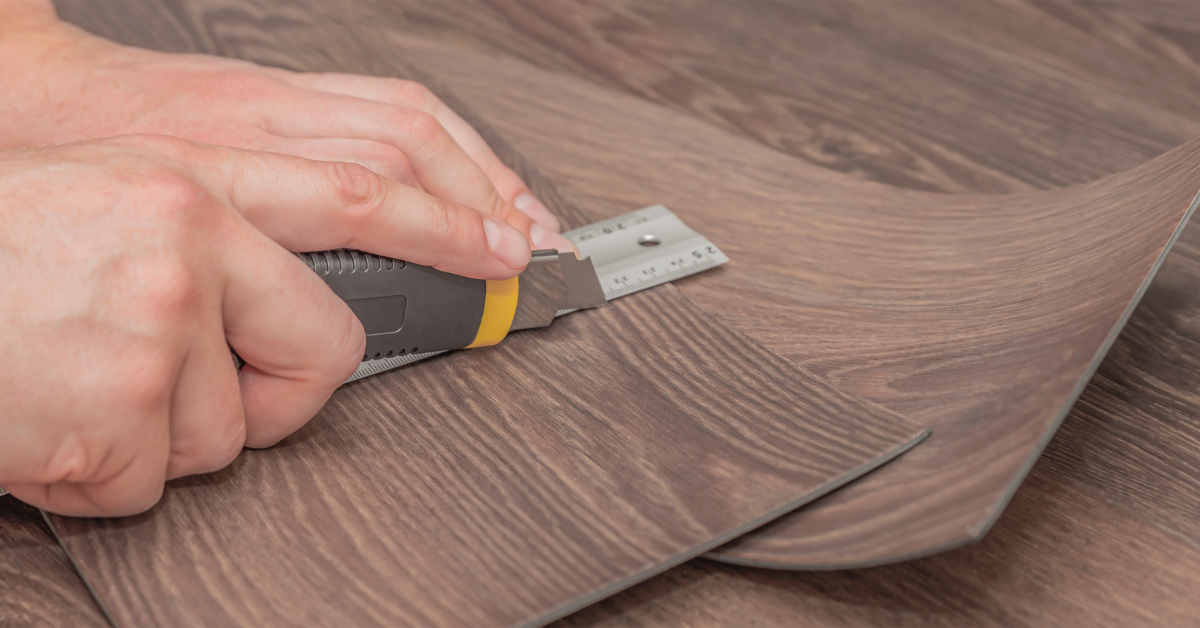As the saying goes, ‘the kitchen is the heart of the home,’ and choosing the right flooring can significantly impact its warmth and functionality. You’ve likely considered vinyl flooring as a versatile and affordable option for your kitchen. It’s praised for its durability and ease of maintenance, which are crucial in a space that sees as much activity as the kitchen.
However, before you make your decision, it’s important to weigh the benefits against the potential drawbacks. Vinyl flooring offers a vast array of design and aesthetic options, but how does it stand up to the test of time and daily wear? Moreover, understanding the cost and care required can help you determine if vinyl floors align with your lifestyle and budget.
Let’s explore the ins and outs of choosing vinyl flooring for your kitchen, ensuring you’re well-informed to make the best decision for the heart of your home.
Key Takeaways
– Vinyl flooring offers a sleek and contemporary look for kitchens.
– It is water-resistant, providing protection against spills and splashes.
– Vinyl flooring is durable and long-lasting.
– It provides a wide range of design and aesthetic options for homeowners.
Benefits of Vinyl Flooring
Vinyl flooring often serves as an ideal choice for kitchens, blending durability with modern aesthetics effortlessly. You’ll find it brings a sleek, contemporary look to your space, while also ticking all the practical boxes. Its water resistance is a major perk, safeguarding your floor from spills and splashes, which are all too common in the kitchen. This means you can wipe up any mess with ease, without worrying about damage.
Moreover, if you’re eco-conscious, you’ll be pleased to know that many vinyl options are now eco-friendly. Manufacturers are increasingly focusing on sustainable practices, offering products that are both kind to the planet and stylish. This shift towards eco-friendliness doesn’t mean compromising on style or durability; instead, it adds to the appeal of vinyl flooring, making it a trend-aware choice for modern kitchens.
Opting for vinyl means you’re not just making a practical decision for today but also investing in a sustainable, fashionable future for your kitchen. Its blend of water resistance and eco-friendliness, coupled with its undeniable aesthetic appeal, makes vinyl flooring a smart, stylish choice that you won’t regret.
Potential Drawbacks
While vinyl floors offer numerous benefits for your kitchen, it’s important to consider its potential downsides to make an informed decision. One aspect to keep in mind is temperature sensitivity. Vinyl can be affected by extreme temperatures, leading to expansion or contraction. This means that in a kitchen, where temperatures fluctuate with cooking and seasonal changes, your flooring might warp or gap over time, impacting its sleek, trendy look.
Moreover, the condition of your subfloor plays a crucial role in the longevity and appearance of vinyl flooring. Uneven or damaged subfloors can lead to visible imperfections on the surface of your vinyl flooring. This not only detracts from its aesthetic appeal but can also cause wear and tear at an accelerated pace. To ensure a flawless finish that complements your kitchen’s design, you might need to invest in subfloor repairs before installation, adding to the overall cost and effort.
Considering these potential drawbacks is vital for achieving the practicality and style you desire in your kitchen. While vinyl flooring is undoubtedly a versatile and stylish option, being aware of these factors ensures you’re equipped to make the best choice for your home.
Maintenance and Care
Maintaining your kitchen’s vinyl flooring requires minimal effort, ensuring its trendy aesthetic remains pristine and functional over time. The secret to keeping it looking its best lies in simple, efficient cleaning routines and its inherent stain resistance. Vinyl flooring, celebrated for its durability and ease of maintenance, fits seamlessly into a busy kitchen environment where spills and splashes are common.
To keep your floor in top condition, consider these essential maintenance tips:
- Sweep or vacuum regularly to remove dirt and grit that can scratch the surface.
- Mop with a mild cleaner; avoid abrasive chemicals that can damage the vinyl.
- Deal with spills immediately to leverage vinyl’s stain resistance and prevent any potential damage.
- Use protective pads under furniture to avoid scratches and scuffs.
Vinyl flooring not only brings a modern and aesthetic appeal to your kitchen but also offers a practical solution for a high-traffic area. Its low-maintenance nature means you can spend less time worrying about upkeep and more time enjoying your stylish, trend-aware space. With just a few simple steps, you can ensure your floor remains a focal point in your kitchen for years to come.
Cost Analysis
After considering the ease of maintenance that vinyl flooring offers, let’s now explore its cost-effectiveness, ensuring your kitchen remains both stylish and within budget.
Vinyl flooring strikes the perfect balance between affordability and aesthetic appeal, making it a smart choice for trend-aware homeowners. The initial cost is considerably lower than many other flooring options, without sacrificing the chic look you’re aiming for.
Moreover, the installation speed of vinyl flooring is a significant cost-saving factor. You won’t be facing lengthy disruptions or high labour costs. Its ability to mimic more expensive materials, such as hardwood or stone, means you can achieve a high-end look without the high-end price tag. This aspect is particularly appealing if you’re renovating with a keen eye on practicality without compromising on style.
As for the resale value, well-chosen and well-maintained vinyl flooring can indeed enhance your home’s market appeal. While it may not boost your home’s value as much as natural materials, its modern appearance and durability make it a positive selling point for potential buyers who value practical, stylish, and low-maintenance homes.
Design and Aesthetic Options
Beyond cost-effectiveness, vinyl flooring offers a vast array of design and aesthetic options to elevate your kitchen’s style. You’re not just choosing a floor; you’re selecting the backdrop of every moment that’ll happen in your kitchen. With the latest advancements in vinyl flooring technology, here’s what you can expect:
- Colour Trends: Vinyl flooring keeps up with the latest colour trends, offering everything from warm, earthy tones to cool, minimalist greys. Whether you’re aiming for a cosy, welcoming vibe or a sleek, modern look, there’s a colour palette that’ll match your vision perfectly.
- Pattern Variety: The range of patterns available in vinyl flooring is staggering. From classic wood-look designs that mimic the intricacies of natural wood grains to geometric patterns that make a bold statement, vinyl has it all.
- Texture Options: High-quality vinyl flooring now comes with textured finishes that can replicate the feel of real stone or wood, adding an extra layer of realism to your kitchen floors.
- Customization Possibility: Some vinyl flooring options offer customization, allowing you to mix and match patterns and colours for a truly unique kitchen floor.
With these design and aesthetic options, vinyl flooring lets you unleash your creativity, ensuring your kitchen not only reflects the latest trends but also your personal style.
Frequently Asked Questions
How Does Vinyl Flooring React to Underfloor Heating Systems in Kitchens?
Vinyl flooring handles underfloor heating systems well, offering impressive temperature tolerance. You’ll find its maintenance requirements minimal, making it a stylish, practical choice for a modern, trend-aware space. It’s a seamless blend of functionality and aesthetics.
Can Vinyl Flooring Be Installed Over an Existing Kitchen Floor, Such as Tile or Hardwood?
Yes, you can install vinyl flooring over existing tile or hardwood, blending cost-effectiveness with design versatility. It’s a trendy, practical choice that elevates your space’s aesthetics without breaking the bank on installation costs.
What Are the Environmental Impacts of Choosing Vinyl Flooring for a Kitchen Renovation?
Choosing vinyl flooring impacts our planet. Imagine a world where recycling challenges pile up, coupled with high manufacturing emissions. It’s trendy, yes, but it’s crucial to weigh these practical, environmental costs in your kitchen makeover.
How Does the Warranty for Vinyl Flooring Work, and What Does It Typically Cover in Kitchen Installations?
Vinyl flooring warranties vary, typically covering manufacturing defects and wear, ensuring your kitchen stays trendy and practical. Check warranty length and transferability options to maximise value, blending aesthetics with peace of mind in your choice.
Are There Any Health Concerns Associated With Vinyl Flooring, Such as VOC Emissions, Especially in a Kitchen Setting?
Yes, vinyl flooring can emit VOCs, especially in tight kitchen spaces, but it’s installation ease and low maintenance meet practical, trend-aware needs. You’ll balance aesthetics with health, considering how these emissions might affect your space.
Conclusion
In conclusion, vinyl floors ventures valiantly into vibrant kitchens, marrying modern marvels with timeless traditions. You’ll find its versatility and value unmatched, making maintenance a breeze and beauty a guarantee.
From chic simplicity to elaborate elegance, vinyl brings your culinary canvas to life without breaking the bank. Embrace this trend-savvy solution, where practicality and aesthetics play in perfect harmony, ensuring your kitchen becomes a testament to tasteful, trend-aware living.




